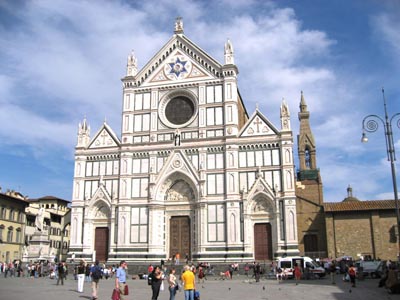Portrait of Gioachino Rossini in 1820. The portrait hangs in the Museo Internazionale e Biblioteca della Musica in Bologna, Italy
Google has doubled up on its Doodle today, celebrating both the 220th birthday of the Italian composer Gioachino Antonio Rossini and also the leap year, via a quartet of leaping frogs in musical mode, playing out Rossini’s comic opera ‘Il Barbiere di Siviglia’.
For the day that comes one year in four, Google’s latest Doodle has been inspired by Rossini’s 1816 comic opera Il Barbiere di Siviglia (The Barber of Seville).
The Doodle features a female soprano frog, possibly alluding to the fact that the 29 February is often associated with females proposing marriage. The frog being shaved alludes to Count Almaviva, from the opera, which is based upon a version of Pierre Beaumarchais’ stage play Le Barbier de Séville. Meanwhile, the barber alludes to the character Figaro from the aforementioned opera.

Today’s Google Doodle
So here’s a little more about Rossini …
It was on this day in 1792 that Rossini was born into a family of musicians in the town of Pesaro, which is poised along the Adriatic coast of Italy. At the time Pesaro was part of the Papal States.
His father, Giuseppe, played the trumpet, while his mother, Anna Guidarini, was a singer. Thus it meant that Rossini spent his early years exposed to the theatrical world.
In 1806, when he was 14, Rossini became a cello student at the Conservatorio di Bologna (now known as the Conservatorio di Musica (Giovan Battista Martini). He composed his first opera seria Demetrio e Polibio in 1806 for a family of singers called the Mombellis. The opera was later staged in 1812.
By the age of 15, Rossini had already learned how to play the violin, the horn and the harpsicord.
‘The Italian Mozart’
Often termed the ‘Italian Mozart’, in all Rossini wrote 39 operas. His most famous operas are Il Barbiere di Siviglia, La Cenerentola, as well as the French-language operas Moïse et Pharaon and Guillaume Tell.
His first opera, La Cambiale di Matrimonio (The Marriage Contract), was produced in Venice when he was 18 years old.
Rossini’s most renowned opera, Il Barbiere di Siviglia, was produced on 20 February 1816, at the Teatro Argentina in Rome. The libretto was a version of Pierre Beaumarchais’ stage play Le Barbier de Séville. It was newly written by Cesare Sterbini. Apparently, Rossini wrote the opera in record time – in around two to three weeks.
Between 1815 and 1823 Rossini produced 20 operas.
In 1822, he married the renowned Spanish opera singer Isabella Colbran. In her native Spain she was known as Isabel Colbrandt.
It was in 1824 that Rossini became musical director at the Théâtre des Italiens in Paris, earning a salary of £800 a year for his efforts.
Between 1824 and 1829, Rossini composed the comic opera Le Comte Ory and Guillaume Tell. The production of Guillaume Tell in 1829 was pivotal, however, in that it brought his career as a writer of opera to a close.
Rossini’s first wife Isabella Colbran, died in 1845, but they had already separated in 1837. In 1846, Rossini married Olympe Pélissier, a French artists’ model.
He died at the age of 76 from pneumonia at his country house at Passy, France, on 13 November 1868.

The Basilica di Santa Croce (Basilica of the Holy Cross) is situated in the Piazza di Santa Croce. Known as the largest Franciscan church in the world, it features 16 chapels. The basilica is also the burial place of such Italian greats as Michelangelo, Galileo, Machiavelli, Foscolo, Gentile, as well as Rossini. The piazza was also used for a type of football game as far back as the 16th century
Rossini was buried in Père Lachaise Cemetery in Paris, France. However, in 1887, at the request of the Italian government, his remains were moved to the Basilica di Santa Croce in Florence, Italy.
Other Italian greats such as such as Michelangelo, Galileo, Machiavelli, Foscolo and the Italian philosopher Giovanni Gentile are also buried in the basilica. Therefore it is known as the ‘Temple of the Italian Glories’.